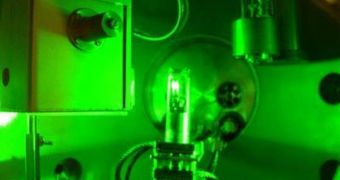A few years ago, if someone would have told a scientist that humans will end up producing materials that are more dense than the core of the Sun, they wouldn't have believed it. Still, this is true now. Researchers at the University of Gothenburg are working on creating ultra-dense deuterium (more commonly known as heavy hydrogen) that will be a hundred thousand times heavier than water is. The scientists hope that the new material will set the basis for a new form of nuclear energy production, one that is not as damaging to the environment as existing ones, and also more sustainable.
“One important justification for our research is that ultra-dense deuterium may be a very efficient fuel in laser-driven nuclear fusion. It is possible to achieve nuclear fusion between deuterium nuclei using high-power lasers, releasing vast amounts of energy. If we can produce large quantities of ultra-dense deuterium, the fusion process may become the energy source of the future. And it may become available much earlier than we have thought possible,” UG Department of Chemistry Professor Leif Holmlid, who has been the leader of the new research, shares.
Thus far, only microscopic amounts of the new stuff have been created in the Swedish laboratory. Experts say that a cube of the ultra-dense deuterium, with a side length of just ten centimeters, weighs approximately 130 tonnes. In addition, the hydrogen atoms inside the compound are connected to each other in a much tighter manner than they usually bond in. This artificially created type of connection is very difficult to master, and that is why German researchers are currently trying to create more of the new type of deuterium. Once an efficient production method is devised, the path to creating new power plants will be opened.
“Further, we believe that we can design the deuterium fusion such that it produces only helium and hydrogen as its products, both of which are completely non-hazardous. It will not be necessary to deal with the highly radioactive tritium that is planned for use in other types of future fusion reactors, and this means that laser-driven nuclear fusion as we envisage it will be both more sustainable and less damaging to the environment than other methods that are being developed,” the expert concludes, as quoted by ScienceDaily.

 14 DAY TRIAL //
14 DAY TRIAL //